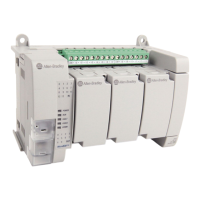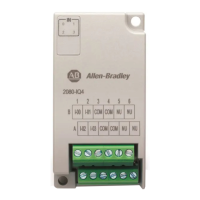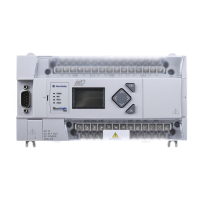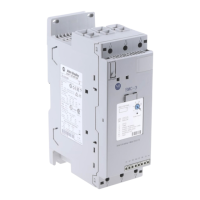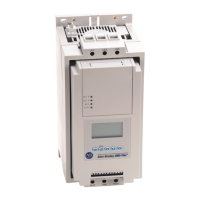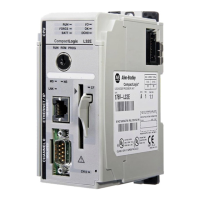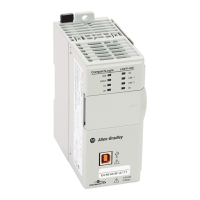332 Rockwell Automation Publication 2080-UM002M-EN-E - April 2022
Appendix G Connect to Networks using DF1
Minimum DF1 Half-Duplex Master ACK Timeout
The governing timeout parameter to configure for a DF1 Half-Duplex Master is
the serial port ACK Timeout. The ACK Timeout is the amount of time you want
the controller to wait for an acknowledgment of its message transmissions. Set
in 20 millisecond intervals, the value is the amount of time the master will wait
for:
• an ACK to be returned by a slave when the master has just sent it a
message, or
• a poll response or message to be returned by a slave when the master has
just sent it a poll packet.
The timeout must be long enough that after the master has transmitted the
last character of the poll packet, there is enough time for a slave to transmit
(and the master receive) a maximum-sized packet before the time expires.
To calculate the minimum ACK timeout, you must know:
• the modem baud rate
• maximum-sized data packet (the maximum number of data words that a
slave write command or read reply packet might contain)
• the RTS/CTS or turnaround delay of the slave modem
• the configured RTS Send Delay in the slave
• the program scan time of the slave
RTS Off Delay
Defines the amount of time, in 20 millisecond increments, that elapses between
the end of the message transmission and the de-assertion of the RTS signal. This
time delay is a buffer to make sure that the modem has transmitted the message
but should normally be left at zero. See RTS Send Delay and RTS Off Delay on
page 330 for further guidelines for setting this parameter.
RTS Send Delay
Defines the amount of time, in 20 millisecond increments, that elapses between
the assertion of the RTS signal and the beginning of the message transmission.
This time allows the modem to prepare to transmit the message. The Clear-to-
Send (CTS) signal must be high for transmission to occur. See RTS Send Delay and
RTS Off Delay on page 330 for further guidelines for setting this parameter.
Pre-Transmit Delay
Defines the amount of time in 1 millisecond increments that elapses between
when the controller has a message to send and when it asserts the RTS signal.
Message Retries
Defines the number of times a master station retries either:
• a message before it declares the message undeliverable
• or a poll packet to an active station before the master station declares that
station to be inactive.
Priority Polling Range – High Select the last slave station address to priority poll.
Priority Polling Range – Low
Select the first slave station address to priority poll. Entering 255 disables priority
polling.
Normal Polling Range – High Select the last slave station address to normal poll.
Normal Polling Range – Low
Select the first slave station address to normal poll. Entering 255 disables normal
polling.
Normal Poll Group Size
Enter the quantity of active stations located in the normal poll range that you
want polled during a scan through the normal poll range before returning to the
priority poll range. If no stations are configured in the Priority Polling Range, leave
this parameter at 0.
IMPORTANT The unconnected timeout value in the Message instruction should
always be larger than the pre-transmit delay.
Table 75 - Configure a Micro800 Controller as a Master Using Standard-communication
Mode (Continued)
Parameter Selections
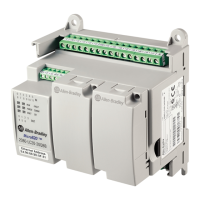
